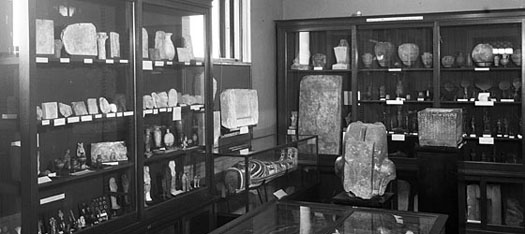| Sun | Mon | Tue | Wed | Thu | Fri | Sat |
|---|---|---|---|---|---|---|
| 1 | 2 | 3 | 4 | 5 | ||
| 6 | 7 | 8 | 9 | 10 | 11 | 12 |
| 13 | 14 | 15 | 16 | 17 | 18 | 19 |
| 20 | 21 | 22 | 23 | 24 | 25 | 26 |
| 27 | 28 | 29 | 30 | 31 |
CATEGORIES
RECENT ENTRIES
BLOG ROLL
A life in layers

As soon as we started reporting our March-April/09 feature on the Oriental Institute’s mummy Meresamun—the focus of a special exhibit this year at the museum—we knew that a few pages in the Magazine wouldn’t be enough for the whole story we wanted to tell. So we took what wouldn’t fit in print and put it on the Web.
Meresamun was a high-ranking singer in Thebes’s Karnak Temple around 800 BC, but since 1920, when James Henry Breasted brought her coffin back from a trip to Egypt, the OI has been her home. Over the decades her life became a slowly unraveling mystery as Egyptologists there pieced together bits of information about who she was and how she might have lived. This past fall the mystery unraveled even further when the folks at the OI and the Medical Center strapped Meresamun to a gurney and loaded her into a new, 256-channel, “intelligent” CT scanner. Peering inside the mummy’s coffin, they saw a 30-year-old woman with bad teeth and perfect bones, an elite priestess who ate well and had a bunion on her right foot. Tendons still connected the fingers to the wrists, and everywhere expensive linen packing filled empty crevices.
And yet, other mysteries remained. Did she ever have children? Radiologists couldn’t tell. How did she die, and why so young? And what was that granular, gummy material that embalmers stuffed down her throat? Egyptologists had rarely seen anything like it.
So, alongside the online version of our story about Meresamun on the Magazine’s Web site, look for the interactive feature Meresamun: A Life in Layers. You can listen to Egyptologist Emily Teeter, PhD'90, talk about the sacred rattle Meresamun would have played during her work in the sanctuary and the scholarly debate over whether temple singers were celibate. You can see an ancient rendering showing what Meresamun might have looked like in life and view the CT images that convinced radiologist Michael Vannier that she had a pretty face. Examine her teeth, so worn they were almost concave, and zoom in on the hieroglyphic inscription that offered scholars the first clues to her identity.
Then head over to the OI exhibit for even more artifacts and images. You have until December 6, when the show closes.
Lydialyle Gibson
- "Priestess of Amun" (Archaeology, Feb. 9, 2009)
- "30-Year-Old Seen for the First Time in 3,000 Years" (CNN.com, Feb. 13, 2009)
- "Exhibition Recreates Life of a Temple Singer" (Chicago Chronicle, Feb. 5, 2009)
- "Photos: 3,000-Year-Old Mummy Seen Using Hi-Tech Scanner" (ComputerWeekly.com, Feb. 2009)
- Add Meresamun as a friend on Facebook
Photo courtesy of the Oriental Institute.
March 19, 2009
